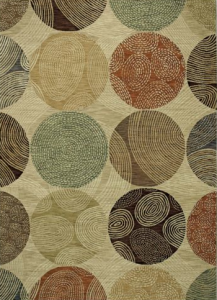
If you like Urban Chic – then clutter, conformity and the complicated have no place in your home. Low tech, high maintenance and the middle ground aren’t for you. Knickknacks are a no-no, less is more, and form faithfully follows function.
If this sounds like you, then your lifestyle is Urban Chic. It originated in the Bauhaus art movement of the 1920’s and has also been called Contemporary. Its heritage can also be traced to the 1930’s German and Scandinavian design schools.
Urban Chic :
Treats spaces almost as pieces of three-dimensional art, balancing form, shape, color and texture – texture from rough and smooth to glossy and matte.
The spaces are highly functional and well organized with lots of storage to eliminate clutter, celebrate order and meet the demands of your modern life.
Surfaces are simple, colors are clean and pure, shapes are geometric with immaculate detail. The look is linear, pared down and polished.
Your Urban Chic furnishings are sleek and strong but uncomplicated in shape, allowing them to mix effortlessly with other styles of furniture.
It all has the effect of creating a home that is cool and contemporary, urban and fresh, sophisticated and streamlined.
A recent interpretation of this style is a movement called Loft Living.
These are homes of modern architectural shape featuring vaulting ceilings, open, spacious floor plans and a multitude of high, wide windows.
The look is a unique combination of industrial masculinity and refined elegance.
Art Deco, the marriage of art and industry, is another variation of Urban Chic.
Introduced in 1925, this style created geometric and asymmetric furnishings of beautiful, organic simplicity.
A dining table with chrome base and glass top was a classic example.
Variations aside, the classic products for your Urban Chic home include stunning glass mosaic tiles, the widespread application of stainless steel and natural complements like honed limestone.
Your colors are serene and seductive; creative combinations of black and white, mahogany browns and stainless steel.
In your kitchen, slab door style cabinetry in dark walnut with euro rail hardware is the perfect answer. And granite countertops — in black of course — are the ideal complement.
This is the Urban Chic lifestyle. Is this your way of living? See more design styles here!








